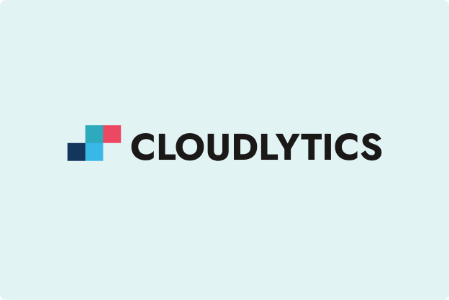The importance of understanding different customer behaviours is evident if organizations look to thrive in the increasingly competitive, modern business world. A top-notch big data and analytics platform powered by the cloud is what they need to scrutinize through multiple stages of the customer journey. This gives the organizations insights essential to develop strategies, services, or products, which will successfully appeal to their customers.
The importance of implementing analytics into customer journeys is manifold, including but not limited to
- Higher customer engagement
- Better revenue and sales
- Greater customer retention and satisfaction
- Wider brand awareness
- Lower cost of lead generation
Although organizations around the world are approaching their businesses with a customer-centric view, harnessing vast amount of intelligence on customers is a big predicament. On the other hand, data-driven organizations find it easy to manage voluminous data through cloud-based analytics platform. Moreover, organizations that make use of analytics extensively are nearly thrice more likely to experience higher ROI and above-average growth in revenue, estimates McKinsey.
Understanding the Branches of the Customer Analytics Tree
There are several use cases of analytics in customer behaviour, where organizations can create profound strategies that lead to improved customer satisfaction. For example, hub.brussels, a leading Brussels-based agency, wanted to promote establishment of the next-generation shopping sector. They partnered with Blazeclan for developing a big data and analytics tool, called Analytics.Brussels, which would help them serve all entrepreneurs, businesses, and tourists with the help of highly reliable, conveniently accessible, and seamlessly consolidated data.
There are various types of customer analytics being implemented, which often falls under one of the following four categories.
- Descriptive Analysis – To gain insights into customer behaviour.
- Diagnostic Analysis – To understand the reasons behind the patterns of different customer behaviour.
- Predictive Analysis – To take proactive actions based on future-estimated behavioural patterns of customers.
- Prescriptive Analysis – To take actions that might influence or address the customer behaviour.
A 360-degree view of customers gives a holistic view of their journey, thereby helping organizations in developing strategies across customer retention, acquisition, and engagement.
- Customer Retention: Studying the behaviour of churned customers enables organizations to conduct predictive analytics. Based on this, they can form appropriate strategies for proactive engagement with customers who are at risk of churn and retaining them.
- Customer Acquisition: Effective sales and marketing plans can be devised by studying different patterns of customer behaviour. This further helps in gaining traction among the target audience and significantly reduce the cost of marketing. Also, the customer conversion ration can be ramped up by crafting personalized campaigns that fit the target audience.
- Customer Engagement: Customized solutions that satisfy immediate requirements are always attractive for customers. This further raises emphasis on providing personalized experiences to customers and engage with them effectively by analysing their challenges, niche market, buying patterns, etc.
Powering Customer Analytics Using the Cloud
Several organizations are not struggling as much in data collection as they are in harmonizing it, gleaning insights, prioritizing insights for converting them into necessary actions, and identifying improvement areas that concern their customers. All this leads to one thing and that is leveraging the power of the cloud.
Renting scalable compute power and paying just for what is used has become the most feasible option for organizations, instead of maintaining a data center of their own. Technologically sophisticated organizations may also rely on a blend of analytics tools developed in-house or third-party services, which in most cases, leverage the cloud.
To Sum Up
The aforementioned dynamics imply the inextricable connection between technology and culture. They show how building a vision that considers both, technology and culture, can most likely help organizations to succeed. With the power of cloud computing, organizations can leverage the characteristic of quantified empathy for creating a customer-centric culture, which keeps the wheel running for the digital business.

















